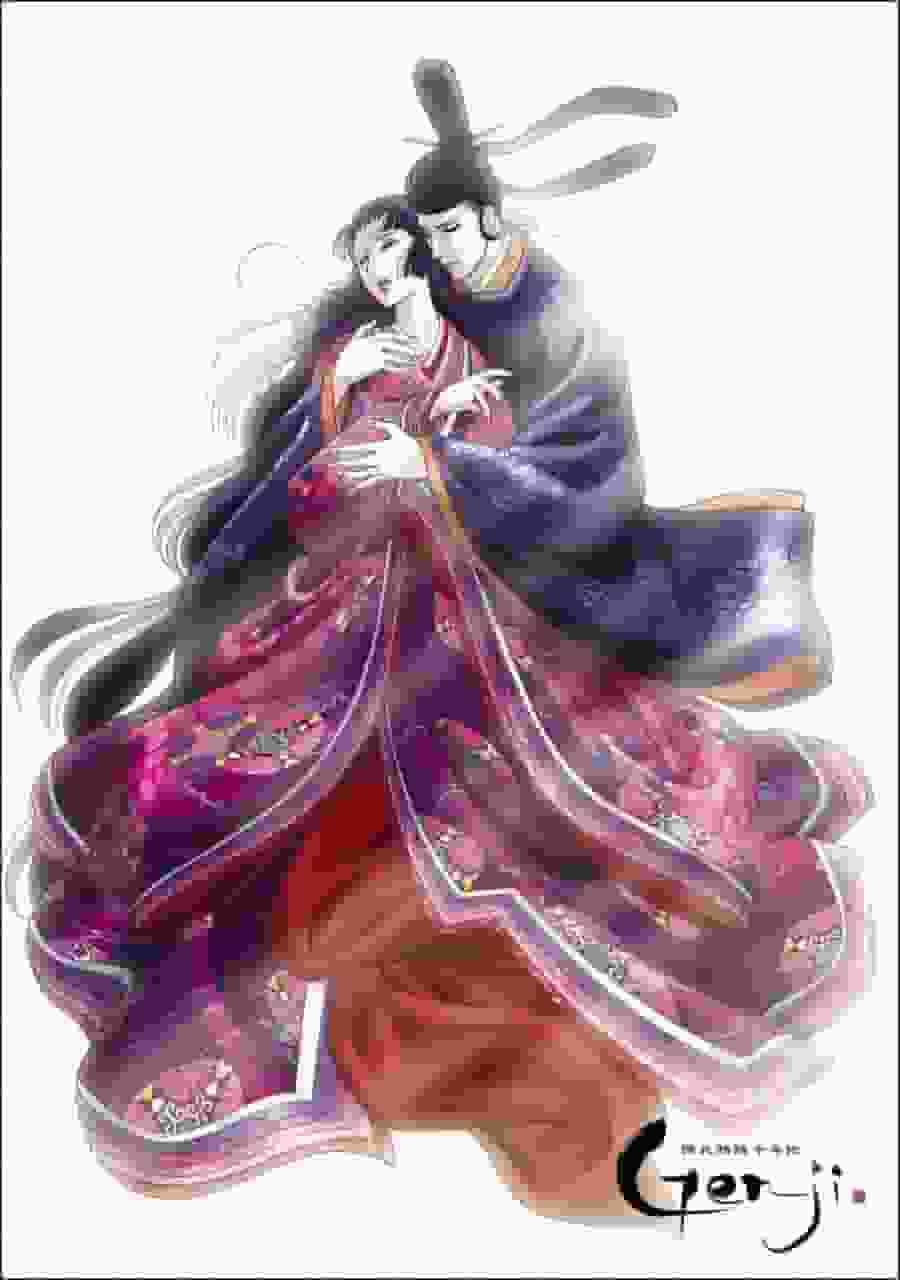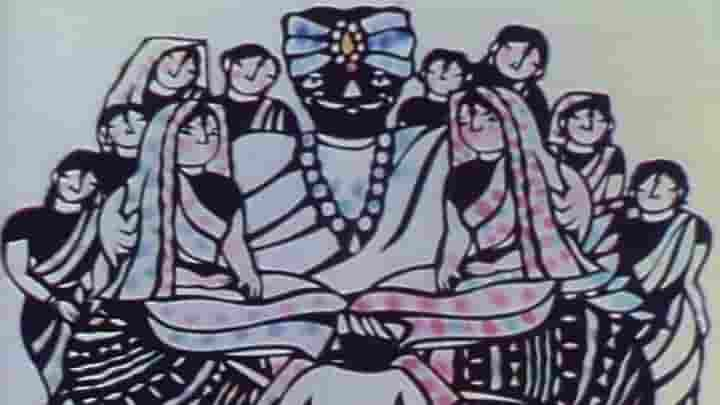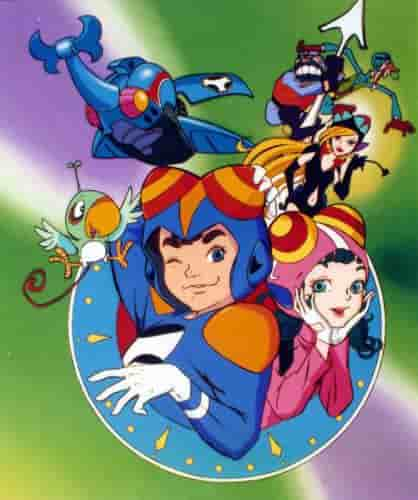"The Tale of Genji Millennium Genji": A fusion of beautiful visuals and profound storytelling

"The Tale of Genji Millennium": An animated masterpiece depicting the beauty and sadness of the Heian period■ IntroductionSet in the imperial court of the Heian period, "The Tale of Genji" depicts the life of Hikaru Genji and the love-hate drama between him and the women around him, and is known as a monumental work of Japanese literature. Based on this masterpiece, the TV anime "The Tale of Genji Millennium Genji", which was broadcast in 2009, was directed by the master director Osamu Dezaki and vividly depicted the beauty and sorrow of the Heian period. In this article, we will explain in detail the appeal and background of this anime, the details of its production, and recommended points for viewers. ■Overview of the workGenji: The Tale of Genji Millennium aired on Fuji TV and other TV stations nationwide from January 16 to March 27, 2009. The series is made up of 11 episodes, each 30 minutes long. It is based on Murasaki Shikibu's The Tale of Genji, directed by Osamu Dezaki, and produced by TMS Entertainment and Tezuka Productions. The copyright is held by the Genji Production Committee. ■Broadcast information"The Tale of Genji Millennium" was broadcast on television stations across the country as follows:
■ StorySet in the imperial court of the Heian period, the story of Hikaru Genji, the son of the emperor and his beloved concubine, Kiritsubo no Saigyo. Hikaru Genji grows into a handsome young man, and falls in love with his father's wife, Fujitsubo no Miya, who is the spitting image of his mother, whom he lost at the age of three. As if seeking relief from his suffering, Hikaru Genji is depicted making pacts with many women. This is an immortal love story that transcends the span of a thousand years, gracefully depicting the Heian period and featuring Hikaru Genji and the women around him. ■ExplanationThe Tale of Genji is a full-length novel written by Murasaki Shikibu, a female writer who served the Imperial Court in the early 11th century, and is a representative work in the history of Japanese literature. A thousand years have passed since the work was first published, and this masterpiece, which became one of the important sources of inspiration for the formation of Japan's unique culture, has finally been made into a television anime. The director is Osamu Dezaki, who has created such masterpieces as The Rose of Versailles, Aim for the Ace!, and Clannad the Movie, and at the age of 65, he has taken on the challenge of adapting this historic literary work into an anime. The work, which depicts the beauty and sadness of the Heian period, will leave a deep impression on viewers. ■CastThe voice cast includes Takahiro Sakurai as Hikaru Genji, Yoshiko Fujita as Empress Kokiden, Aya Endo as Lady Murasaki, Sakiko Tamagawa as Empress Fujitsubo, Kenyu Horiuchi as Emperor Kiritsubo, Tomokazu Sugita as Middle Captain, Eriko Hirata as Lady Aoi, and Hiromi Tsuru as Lady Rokujo. These actors portray the characters of the Heian period realistically, adding depth to the story. ■ Main staffBased on Murasaki Shikibu's "The Tale of Genji," the project was planned by Yoko Matsuzaki (Fuji Television), directed by Osamu Dezaki, assistant director Satoshi Kuwahara, series composition by Tomoko Konparu, character design by Akio Sugino, art director Jiro Kono, color design by Junko Ito, director of photography Keisuke Nakamura, sound director Tomoaki Yamada, music director Seiji Suzuki, music producer Hiroaki Sano, music by SENSProject, music production by Fuji Pacific Music Publishing and Sony Music. The production company is UC Entertainment, the sound producers are Michiyoshi Minamizawa and Takeshi Nishina, the sound effects are Masakazu Yokoyama and Aki Yokoyama, the recording studio is Half H.B. Studio, the sound producers are Nobuo Hirooka and Akane Yamago, the sound production is Toshi Sato, the CG director is Shingo Shimoyama, the editor is Seiji Morita, the assistant editors are Yukie Oikawa and Tamami Watanabe, the line editor is Yuriko Sano, the line editor is Yuko Kambara, the production desk is Takashi Shiotani and Tomoki Iuchi, the digital production is Daisuke Furuya, and the literary director is Ii The directors were Yoko Sawa and Mayumi Morita, set production was Fujiyoshi Minako, publicity was Suzuki Maiko (Fuji Television), publicity was Isoda Atsuhito and Kanai Akiko, publicity cooperation was K Press, production was by Yamada Hiroko (Fuji Television), Terashima Hirorei, Kitagawa Naoki, Takada Yoshio, Matsumoto Masato, Udagawa Sumio, production managers were Yamazaki Yoshihiro (Fuji Television), Sato Nobunobu, Kamei Takejiro, Nohara Midori, Yumoto Hiroyuki, assistant producer was Takeeda Yoshinori (Fuji Television), producers were Nakajima Hiroaki (Fuji Television), Yamamoto Koji (Fuji Television), Miyamoto Hideaki, animation producers were Ukai Hiroshi and Hashimoto Shintaro, animation production was by TMS Entertainment and Tezuka Productions, and production was by Genji Production Committee (Fuji Television, Asmik Ace Entertainment, Sony Music Entertainment, Dentsu, TMS Entertainment, Tezuka Productions). ■SubtitleThe subtitles for each episode are as follows:
■ Theme songs and musicThe opening theme, "Hiyorihime," was written, composed, and arranged by Shiina Ringo, and sung by PUFFY. The ending theme, "Koi," was written by Kobayashi Natsumi, composed by Hamamoto Hiroyuki, arranged by Kono Shin, and sung by Naka Kosuke. These songs are important elements that bring out the atmosphere of the Heian period in the modern day. ■ Background and significance of productionThe production of "Genji: The Tale of Genji Millennium" was a long-held dream of Director Osamu Dezaki, and it can be said to be the culmination of his career. Director Dezaki paid particular attention to every detail in the production in order to express the beauty and sadness of the Heian period in the medium of anime. In particular, the roles of character design and art direction were important, and a lot of time and effort was spent to recreate the atmosphere of the Heian period. In addition, the music was also handled by SENSProject to enhance the atmosphere of the Heian period, and beautiful melodies color the story. ■Recommendation points for viewers"The Tale of Genji Millennium" is a work that depicts the beauty and sadness of the Heian period, and is recommended not only for fans of the original "The Tale of Genji" but also for those who are interested in anime and historical dramas. In particular, the following points are the reasons for recommending it.
■ Summary"Genji: The Tale of Genji" is a masterpiece of anime that depicts the beauty and sadness of the Heian period. Filled with director Osamu Dezaki's attention to detail and passion, this work will deeply move viewers. This work is recommended not only for fans of the original "Tale of Genji", but also for those who are interested in anime and historical dramas. Be sure to watch this timeless love story that transcends a thousand years. |
<<: The appeal and reviews of the movie version of "Armored Trooper Votoms: The Pailsen Files"
>>: Keihin Family: A moving story about family ties and the warmth of everyday life
Recommend
A thorough review of episode 11 of season 4 of 'GeGeGe no Kitaro' from the 90s!
The appeal and evaluation of the fourth season of...
The appeal and reputation of "Mobile Suit V Gundam": A monumental achievement in real robot anime
Mobile Suit V Gundam - Kidou Senshi Victory Gunda...
Ghost of Tsushima game adaptation movie screenwriter confirmed
According to Deadline, PlayStation Productions an...
"Digimon" TV animation restarts the new adventure of elementary school student Yagami Taichi
According to the latest news from Japanese magazi...
Tokyo National Museum includes Gundam in "Future National Treasure" exhibition
Bandai Namco Filmworks announced at its autumn ev...
"Golgoku 13" Super Killer Togo's Philosophy of Life: 10% Talent and 40% Luck
The classic adult manga "Golgo 13" from...
Cartoonist Akamatsu Ken was elected to the Japanese Diet, becoming the first cartoonist to serve as a member of the Diet
Ken Akamatsu, a Japanese manga artist and author ...
"JUMP Sports Manga Award" held, Inoue Takehiko served as judge
Throughout the long history of Shueisha's boy...
Liu Huan sings the theme song of "The Wandering Earth" MV "Wandering with the Earth"
“The sea that day was as blue as the sky. Our Ear...
Netflix's thriller Korean drama "Beijing Monster" officially released trailer
The official trailer of Netflix's thriller Ko...
Digimon Adventure tri. Chapter 4 "Loss": A thorough analysis of the deepening story and character growth
A comprehensive review and recommendation of &quo...
Review of "Shochan Kumabou Senki": A unique adventure and charming characters
Sho-chan Kumabo's Strange War Chronicles - Sh...
"Steins;Gate: Load Region of Deja Vu" Movie Review: An emotional time leap experience
"Steins;Gate The Movie: Load Region of Deja ...
The appeal and reviews of Toradora!: A thorough analysis of this masterpiece of youth romantic comedy
Toradora! - Toradora - All-round information and ...
DC's new film "Black Adam" is expected to lose $50 million to $100 million
According to foreign media Variety, DC's new ...









